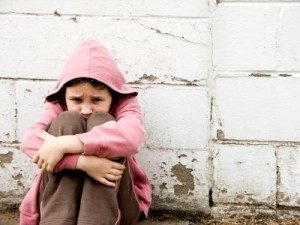David Kingman looks at the intergenerational aspect of wealth and poverty in the UK
A recently published report by the Institute for Fiscal Studies (IFS) has highlighted how the types of household which are affected by poverty and low incomes have changed remarkably over the past two decades.
The report, Living Standards, Poverty and Inequality in the UK: 2016, points out that the way these problems have changed means new policy ideas will be needed to try to address them. In particular, these changes have important implications for intergenerational fairness, as this blog will explain.
Rise in working poverty
The most important way in which the nature of poverty has changed in the UK over the past two decades is that it has become predominantly a problem which affects working-age households where someone works, rather than either the long-term unemployed or pensioners.
By analysing a government data set called the Households Below Average Income series, which covers the period between 1994/5 and 2014/15, the IFS has shown that whereas pensioner households were the demographic group who were the most likely to be living below the government’s official poverty threshold (having a household income which is below 60% of the national median) at the beginning of this period, they are now the group who are least likely to be doing so on an after-housing-costs basis.
Concurrently, the burden of poverty has shifted so that it is now working-age households where someone works who have become the group which is most likely to be living below the government’s poverty threshold. Strikingly, two-thirds of the children who live below the government’s absolute poverty threshold are in households where at least one adult works, while the overall share of children who live in households where no-one works has fallen from around a quarter 20 years ago to barely a sixth today.
An intergenerational problem?
The IFS research suggests several possible reasons for these trends, which point to their intergenerational implications. First and foremost, it’s worth highlighting that these changes in some senses represent forms of progress: government policy has deliberately tried to raise pensioners’ incomes through mechanisms such as the Additional State Pension and the state pension “triple lock”, and to get more of the working-age unemployed into work, which has been partly why the burden of poverty has shifted.
Secondly, they have come about because of the dramatic growth in housing costs. Poverty has risen much more rapidly on an after-housing-costs basis than it has overall, which generally affects working-age households more severely because they are less likely to be outright owners and so have higher housing costs from paying rent or mortgage repayments. One of the IFS’s most interesting observations is that “In key respects middle income families with children now more closely resemble poor families than in the past. Half are now renters rather than owner occupiers and, while poorer families have become less reliant on benefits as employment has risen, middle-income households with children now get 30% of their income from benefits and tax credits, up from 22% 20 years ago.”
The third reason is that much of the fall in overall unemployment appears to be explained by the growth of poorly paid work, particularly among younger workers. The IFS found that workers who are aged 22-30 are still doing especially badly: whereas overall median incomes have finally risen to 2% above their pre-crisis level, for workers in this age group they are still 7% below it.
This analysis offers causes for both optimism and pessimism. The UK may have made enormous progress in tackling the problems of entrenched working-age unemployment and pensioner poverty compared to how bad they used to be, but we may have simply exchanged that world for a new one where millions of the extra people who are in work can barely earn enough to support themselves because of stagnant pay and suffocating housing costs. It also shows that the modern divide between old and young is starting to mirror the traditional divide between rich and poor ever more convincingly.
